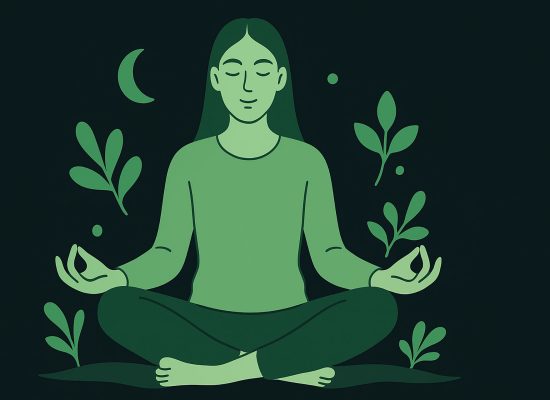Mindfulness and gratitude are both meaningful practices to incorporate year round. During the holiday they can be an especially helpful way to preserve and share the joy and to validate all of the ups and downs that you may encounter. Thanksgiving can be an especially reflective time, so preparing to be present in the moment and check in of your feelings throughout the day can help you to get the most out of this holiday of gratitude.
Table Of Content
Siddha Meditate app offers classes that can help you relax before and after the holidays and provide a framework for thanksgiving gratitude practices. We are here with mindfulness gratitude exercises for Thanksgiving to make your holiday and everyday feel a little bit better. Visit our Guided Mindfulness Meditation Classes to experience classes that prioritize joy and deep self-awareness. Start or rebuild your meditation habit with Siddha Meditate today and learn our best mindfulness tips for gratitude as you continue a habit of meditation in your life.
What is gratitude?
Gratitude is the practice of awareness and appreciation for the things, people, and circumstances in your life that bring you joy. For example, you may feel gratitude towards a beautiful sunny day after a series of gloomy days. Or you may feel gratitude for the beautiful parks, beaches, forests, mountains or natural preserves in your area. Gratitude isn’t just an expression or verbal action, but a mindset. This mindset can be the basis for productive practices like mindfulness meditation, where you build gratitude for the things that you might otherwise take for granted, such as your breath or mind body connection.
What is gratitude in psychology?
Gratitude works its magic in our lives in many external ways, and what it can do for our brains is just as incredible. Gratitude can reduce levels of PTSD and overall stress and increase our mental resistance, helping us to more easily overcome the mental challenges and stressors that come our way[1]. In her TED talk, How gratitude rewires your brain, then PhD candidate, now psychology professor, Dr. Christina Costa, speaks about her research and experience with gratitude. She says that,
“The more I practiced gratitude, the more peace I felt in my situation, and this got me interested in what could be happening with the science of gratitude at a neurological level. There are several positive psychological and social outcomes of gratitude, like increases in happiness, decreases in depression, having stronger relationships and experiencing positive emotion.”
Why does gratitude matter in our lives?
Everyone expresses and experiences gratitude more than we know. We express our gratitude for our communities every day. We express gratitude towards anyone we say “thank you” to. We express gratitude to our coworkers by sending them kind emails. We express gratitude to our friends and family by complimenting and embracing compliments. A framework of mindfulness meditation can be a great way to remind ourselves to pay attention to what gratitude feels like, giving us the skills to use gratitude outside of meditation.
How do you practice mindfulness and gratitude?
Mindfulness meditation builds our gratitude by increasing our body awareness. This consciousness teaches you to become grateful and express gratitude for your body using body awareness to build self-compassion. When you are grateful for your body, especially as it connects to your mind, you are also expressing that you are grateful for your existence.
To learn more about self-compassion, take our Practicing Self-Compassion class, which uses visualization to build confidence and develop our relationships with others. In this mindfulness gratitude exercise for Thanksgiving, instructor Amy Pattee Colvin deepens your sense of calm and thoughtful curiosity, both of which are essential for Thanksgiving.
In case you’re new with Mindfulness, you can read “What is mindfulness?“
Mindfulness meditation as celebration
Meditation is important not just as relief from “the real world” but as a way to be joyful and spread and prolong the joy, making it an amazing Thanksgiving gratitude practice. Mindfulness meditation as an established routine can help us be more present during the higher highs, as it helps you to be more grounded. It can be a wonderfully joyful practice, lighting up your neurons with a hit of serotonin. Even if your holiday isn’t going the way that you planned, mindfulness meditation can be a great escape and way to find a sense of celebration of yourself.

What are some mindfulness practices for Thanksgiving?
It is important to be familiar with some mindfulness tips for gratitude before your day even begins, so that you feel prepared to face the day with a sense of positivity and self-compassion. These Thanksgiving gratitude practices to help you get the most out of the holiday.
3 ways to use meditation as a mindfulness gratitude exercises for Thanksgiving:
- Waking up feeling anxious or excited for the holiday ahead? Start your day with a mindfulness meditation to set an intention for your Thanksgiving and feel calm and confident. Thanksgiving gratitude practices can help you focus on the positives and fully enjoy the day. Peeling potatoes and rolling pie dough have nothing on you and your mindful mindset.
- Amidst the chaos of the cooking, chatting, and coping, it can be a huge relief to take a break for a Thanksgiving gratitude practices. If you’re feeling stressed or overwhelmed, meditate outside or in a private space to recharge. The most important part of any holiday is that you are taking care of yourself.
- Regardless of what your Thanksgiving had in store, a great mindfulness tip for gratitude is to meditate at the end of the day. In the Siddha Meditate app, the notes feature allows you to take private notes and reflect on your day and meditation class after every practice, which can be essential during the holidays as a way to collect the memories, good and crazy alike.
Why is gratitude important during the holidays?
As other holidays approach, carrying forward the habit of meditation is especially important, to help us persevere through the low lows and high highs. Festive times can be both fun and stressful, as there can be so much pressure on holidays to feel like the best days ever. Incorporating mindfulness gratitude exercises for Thanksgiving into your routine can set the tone for a season of mindfulness and self-care.
Having a routine of mediation during this time can help you to prioritize yourself and your mental health and wellness. Our class Why practice daily? serves as a great introduction to a habit of meditation or as a wonderful reminder of how and why you should make meditation a part of your routine 365 days a year.

How to be grateful for your routine of mindfulness meditation
Thanksgiving is a great time to express gratitude for your mindfulness meditation routine and all that it does for you and your life. Meditation is with us through through it all. It energizes us when we feel down and relaxes us when we’re excited. It gives us a break from the clutter of our busy lives.
Overtime, your habit of meditation helps you, with your productivity, sleep, anxiety, depression and your overall well-being and health. It helps you to love yourself regardless of the situation. Mindfulness meditation helps you to better show up for yourself and your loved ones, helping you to set boundaries and understand the feeling and expression of love in all of its forms. Meditation is worth celebrating because you are worth celebrating. Incorporating mindfulness tips for gratitude can further enhance your practice and deepen your appreciation for life’s everyday blessings.
In a Nutshell
This article provides you with a definition of gratitude, understanding of why gratitude should matter to you, and an explanation of several Thanksgiving gratitude practices that you can use this holiday. It continues by explaining why mindfulness tips for gratitude are essential for all holidays and how meditation and gratitude can help you take the best possible care of yourself.
FAQ about Thanksgiving Gratitude Practices
Why is gratitude important during the holidays?
Gratitude is important during the holidays because it helps us appreciate the positive moments, stay grounded during stressful times, and connect more deeply with others. By using mindfulness tips for gratitude, we can remain present, reduce stress, and cultivate a deeper appreciation for both the small and big moments. Practicing gratitude allows us to focus on the joy and meaning of the season, reducing stress and enhancing overall well-being.
What are some Thanksgiving gratitude activities?
Some Thanksgiving gratitude activities include starting your day with a mindfulness meditation, taking breaks to reflect during the festivities, and ending the day with gratitude-focused meditation. You can also practice body awareness and guided visualization to foster self-compassion and appreciation.
How can I be more mindful during Thanksgiving?
To be more mindful during Thanksgiving, focus on staying present by paying attention to your thoughts and feelings throughout the day. Practice gratitude for the people and experiences around you, take mindful breaks to breathe or meditate, and engage fully in each moment, whether it’s preparing food, sharing a meal, or reflecting on the day.
What are mindfulness gratitude exercises for Thanksgiving?
Start your day with a mindfulness meditation to set an intention for your Thanksgiving and feel calm and confident If you’re feeling stressed or overwhelmed, meditate outside or in a private space to recharge. Regardless of what your Thanksgiving had in store, a great mindfulness tip for gratitude is to meditate at the end of the day.
[1] “The Neuroscience and Positive Impact of Gratitude in the Workplace” The Neuroscience and Positive Impact of Gratitude – ProQuest







